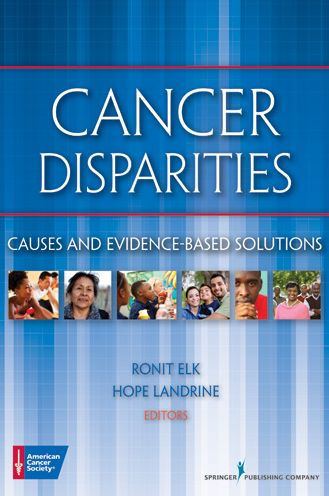"The volume sheds new light on reducing disparities by complementing currentlyavailable monographs, through the provision of solutions that are not onlytheoretically innovative but also empirically effective. Indeed, Cancer Disparities: Causesand Evidence-Based Solutions admirably achieves two key objectives that are crucial foradvances in the field: (a) providing an up-to-date overview of cancer-related disparities and(b) describing evidence-based interventional approaches to close the cancer-relateddisparities gap. The implicit promise is that these approaches will enable public health practitioners,cancer control workers, and community members to use or adapt them in their owncommunities. This volume is essential to help make that promise a reality."--PsycCRITIQUES
Cancer is not randomly distributed in the United States. Its incidence varies by race, ethnicity, socioeconomic status, and other geographic and demographic factors. This volume, co-published with the American Cancer Society, is the first to examine the biological, racial, and socioeconomic factors that influence cancer incidence and survival. In addition, it presents 15 previously unpublished, evidence-based interventions to reduce and eliminate cancer disparities.
The book explains the nature, scope, and causes of cancer disparities across different populations and then presents unique programs proven to reduce such inequalities in the areas of cancer prevention, screening and early detection, treatment, and survivorship. They represent a variety of cancers, populations, and communities across the U.S. Descriptions of each intervention include tests of effectiveness and are written in sufficient detail for readers to replicate them within their own communities.
Key Features:- Offers an in-depth look at the latest research behind cancer disparities
- Written by highly respected and published cancer researchers
- Includes 15 never-before published, evidence-based interventions that readers can replicate
- Discusses breast, colorectal, cervical, and other pernicious cancers
- Includes interventions for African-American, Hispanic, Native American, and other populations
"The volume sheds new light on reducing disparities by complementing currentlyavailable monographs, through the provision of solutions that are not onlytheoretically innovative but also empirically effective. Indeed, Cancer Disparities: Causesand Evidence-Based Solutions admirably achieves two key objectives that are crucial foradvances in the field: (a) providing an up-to-date overview of cancer-related disparities and(b) describing evidence-based interventional approaches to close the cancer-relateddisparities gap. The implicit promise is that these approaches will enable public health practitioners,cancer control workers, and community members to use or adapt them in their owncommunities. This volume is essential to help make that promise a reality."--PsycCRITIQUES
Cancer is not randomly distributed in the United States. Its incidence varies by race, ethnicity, socioeconomic status, and other geographic and demographic factors. This volume, co-published with the American Cancer Society, is the first to examine the biological, racial, and socioeconomic factors that influence cancer incidence and survival. In addition, it presents 15 previously unpublished, evidence-based interventions to reduce and eliminate cancer disparities.
The book explains the nature, scope, and causes of cancer disparities across different populations and then presents unique programs proven to reduce such inequalities in the areas of cancer prevention, screening and early detection, treatment, and survivorship. They represent a variety of cancers, populations, and communities across the U.S. Descriptions of each intervention include tests of effectiveness and are written in sufficient detail for readers to replicate them within their own communities.
Key Features:- Offers an in-depth look at the latest research behind cancer disparities
- Written by highly respected and published cancer researchers
- Includes 15 never-before published, evidence-based interventions that readers can replicate
- Discusses breast, colorectal, cervical, and other pernicious cancers
- Includes interventions for African-American, Hispanic, Native American, and other populations

Cancer Disparities: Causes and Evidence-Based Solutions
580
Cancer Disparities: Causes and Evidence-Based Solutions
580eBook
Related collections and offers

Product Details
| ISBN-13: | 9780826108838 |
|---|---|
| Publisher: | Springer Publishing Company |
| Publication date: | 10/25/2011 |
| Sold by: | Barnes & Noble |
| Format: | eBook |
| Pages: | 580 |
| File size: | 5 MB |
